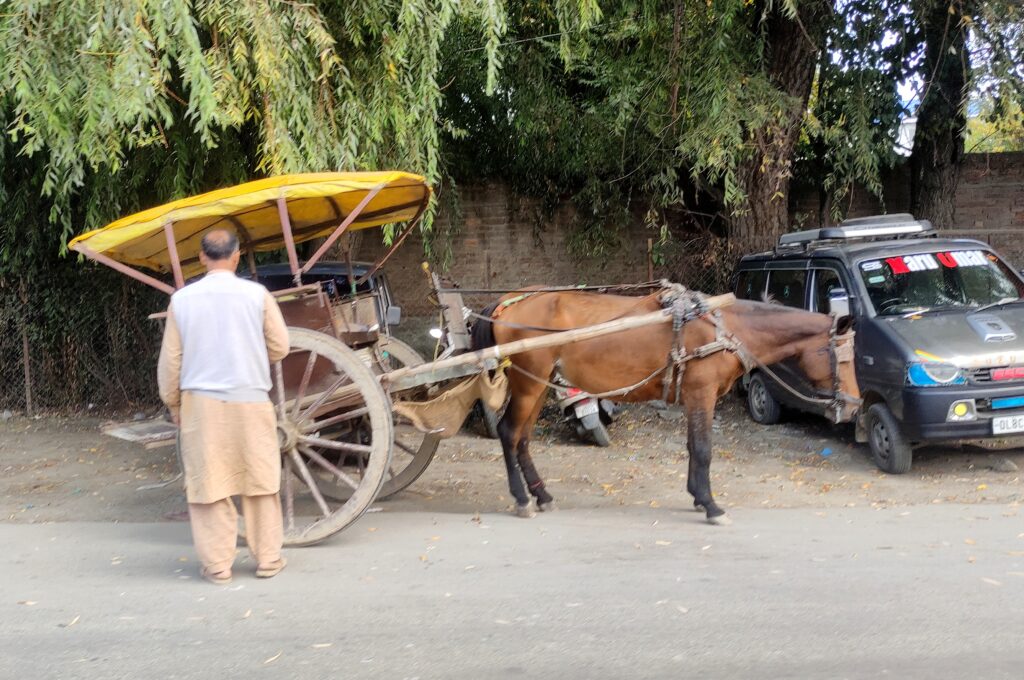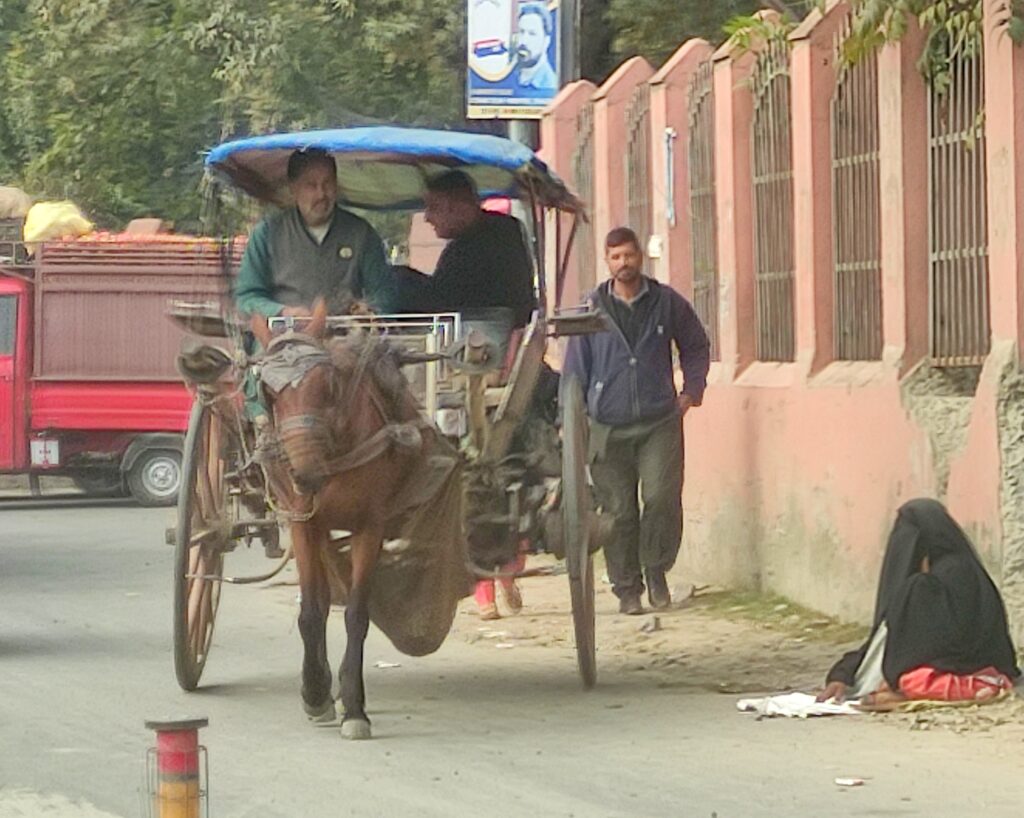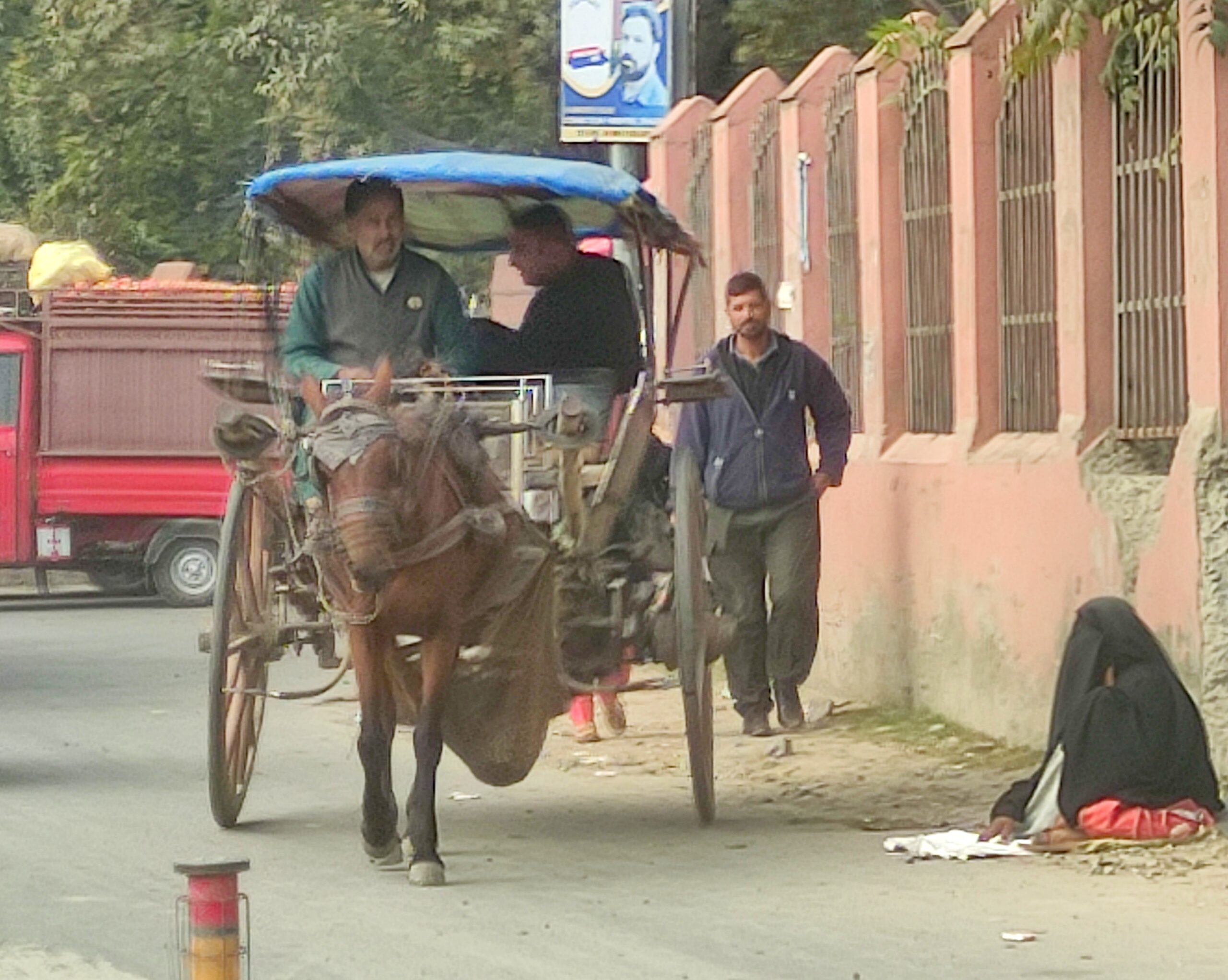The Tanga has been a source of livelihood for generations of Kashmiri families. Beyond transportation, the Tanga is a cultural symbol in Kashmir, used in various aspects of life, including weddings and festivals. However, it faces challenges in the modern era, and there is a need for efforts to preserve this cultural icon
By Khursheed Dar
A serene Tanga horse cart ride through the idyllic streets of Kashmir unfolds a charming and nostalgic experience, transcending passengers to a bygone era. Pulled gracefully by a robust horse, the Tanga cart gently meanders through picturesque avenues, bestowing a leisurely pace that encourages one to savor the beauty of the surroundings. This unique blend of history and tranquility provides passengers with a truly unforgettable journey through the annals of time.
Just last week, I embarked on a thrilling Tanga adventure, using it as my mode of transport to reach the sacred Sufi shrine of Hazrat Baba Shakoor u din RA at Watlab Sopore. The rhythmic clatter of hooves echoed in harmony with the tranquil surroundings, creating an awe-inspiring spiritual voyage. The allure of this traditional means of transportation inspired me to pen down this column for the esteemed readers of GK.

The traditional ‘Tanga’ horse cart of Kashmir is not just a mode of travel; it’s a symbol of the region’s rich cultural heritage. This iconic conveyance is not only a testament to Kashmir’s artistry but also a reflection of the deep craftsmanship intrinsic to its people.
The history of the ‘Tanga’ horse cart in Kashmir traces back to antiquity. It is believed that these horse-drawn carriages were introduced during the Mughal era, most likely in the 16th century. The Mughal emperors, known for their ardor for art and culture, played a pivotal role in shaping Kashmir’s cultural tapestry, including the evolution of the Tanga.
In the context of weddings, the ‘Tanga’ takes on a special role, beautifully adorned with flowers and colorful fabrics to transport the bride and groom to their nuptial destination. This tradition adds a regal elegance to the festivities and is a testimony to Kashmir’s enduring cultural practices
The ‘Tanga’ is a masterfully crafted wooden cart, typically harnessed by one or two horses. Its design is both pragmatic and artistic. The cart’s body is typically hewn from robust wood, often embellished with intricate, traditional Kashmiri patterns and motifs. Even the wheels, also made of wood, bear ornate decorative elements, while the cart itself is adorned with vibrant, eye-catching colors that add to its visual allure.
The seating arrangement within the ‘Tanga’ is simple yet comfortable. Passengers sit on cushioned seats, and the cart’s roof offers shade and protection from the elements. The driver, known as the ‘Tangawala’ in Kashmiri parlance, occupies the front seat and adeptly controls the horses using traditional reins.
The ‘Tanga’ horse cart is steeped in cultural significance in Kashmir. It is not merely a mode of conveyance but a potent symbol of tradition, hospitality, and artisanal excellence. The Tanga has historically been put to various uses, from transporting people to their destinations to conveying goods, and even playing a central role in weddings and festive celebrations.
In the context of weddings, the ‘Tanga’ takes on a special role, beautifully adorned with flowers and colorful fabrics to transport the bride and groom to their nuptial destination. This tradition adds a regal elegance to the festivities and is a testimony to Kashmir’s enduring cultural practices.
The ‘Tanga’ horse cart has also been a source of livelihood for numerous Kashmiri families. ‘Tangawalas’ have been faithfully plying their trade for generations, and for many, it remains the primary means of earning a livelihood. This time-honored occupation is not merely an economic pursuit but a way to preserve and transmit traditional skills and wisdom to subsequent generations.

In recent years, the Tanga horse cart has faced challenges due to the advent of modern transportation methods. The rise of motorized vehicles and the development of better road infrastructure have diminished the demand for Tangas. Consequently, many Tangawalas have grappled with adapting to these changes and maintaining their way of life.
Nevertheless, there are concerted efforts underway to both preserve and modernize this cultural icon. Some Tangawalas have transitioned into offering tourists a unique and nostalgic experience, providing rides in splendidly decorated Tangas that serve as living testimonials to Kashmir’s rich cultural heritage. These endeavors not only ensure the preservation of the tradition but also contribute to the burgeoning tourism industry.
The traditional ‘Tanga’ horse cart of Kashmir is more than just a mode of transportation; it embodies the essence of cultural identity, craftsmanship, and tradition. Its historical significance, intricate design, and cultural value make it an indispensable part of Kashmir’s heritage. While encountering challenges in the modern era, the Tanga remains a lifeline for many and a living testament to the rich cultural history of the region. Preserving and modernizing this iconic mode of conveyance is not only essential for the livelihood of ‘Tangawalas’ but also for keeping Kashmir’s cultural legacy alive for generations to come.
The views expressed in this article are solely those of the author and do not necessarily reflect the opinions or views of this Magazine. The author can be reached at [email protected]

Leave a Reply